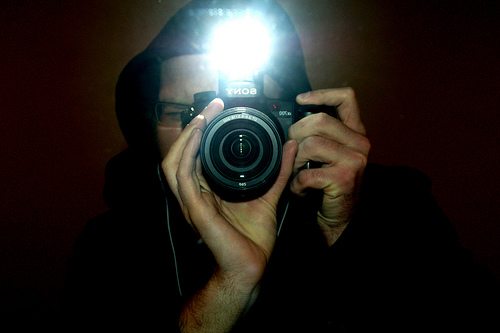General
Knowing When To Use Your Camera’s Flash

Flash photography is a very different game from using the ambient light around you, but that doesn’t mean your camera’s flash can’t be tamed all the same. When using flash, it is important to keep in mind that your subject is being lit by two distinct light sources, one of which you have control over. This control is much more expansive than making a picture brighter, and tactful use of flash will allow you to produce shots with more appropriate light composition.
Hard Vs. Soft
One of the most important distinctions to make when examining a shot’s lighting is whether there is a soft or hard lighting in the scene. This light distribution affects the contrast of the subject, which is the difference between the dimmest and brightest portions on it. A couch lit by a single light bulb will have well illuminated spots near the light and very bold shadows on the other side. This is exactly what is meant by hard light; since all of the light in the shot comes from one source, there will be a high contrast. Conversely, soft lighting is evenly distributed through a shot, giving a more even illumination of the subject. Soft lighting is usually the goal of portrait shots, so if your family is posing on this poorly lit couch, your flash will indeed be useful.

Achieving Better Light Composition
For portraits, low contrast is more aesthetically pleasing because a shot with hard light will cause a face to have shadows over its features. That’s why school pictures were always taken with the strange looking umbrellas: reflecting light off of walls makes it originate from a larger area than just the flash bulb, given a more evenly composed shot. Reflectors and diffusers both aim to do this, their drawback being a reduction in flash intensity. Going back to our family sitting on the couch, a good strategy is to point your hot shoe flash toward the ceiling or a wall; reflecting it off of something will give the same desirable softer lighting.
Fill Flash
One use of the flash that can come in handy is using it as a fill. Fill flash, so called because it fills in the shadows of a subject that has high contrast, can be useful even in well lit scenarios. Sometimes a shot with plenty of light does not have the right composition, for example, on a sunny day when the sun is right behind your subject. Using flash in these situations will help change a hard lighting to soft lighting, and give you a better photograph.
Knowing when and how to use your camera’s flash is an important part of getting the most out of your photos. It can be impossible to tell exactly how flash will look in a shot until after the picture is taken, so discretion is needed. However, with a bit of know-how, practice and eventually intuition, your flash will become a well utilized tool on your camera, rather than being neglected or used too often.
Bill Green is an engineering student and freelancer for Photo.net where you can learn more about getting the most out of your camera equipment and read reviews of camera equipment.
-

 Tech11 years ago
Tech11 years agoCreating An e-Commerce Website
-

 Tech11 years ago
Tech11 years agoDesign Template Guidelines For Mobile Apps
-

 Business6 years ago
Business6 years agoWhat Is AdsSupply? A Comprehensive Review
-

 Business10 years ago
Business10 years agoThe Key Types Of Brochure Printing Services
-

 Tech8 years ago
Tech8 years agoWhen To Send Your Bulk Messages?
-

 Tech5 years ago
Tech5 years ago5 Link Building Strategies You Can Apply For Local SEO
-

 Law5 years ago
Law5 years agoHow Can A Divorce Lawyer Help You Get Through Divorce?
-

 Home Improvement6 years ago
Home Improvement6 years agoHоw tо Kеер Antѕ Out оf Yоur Kitсhеn































